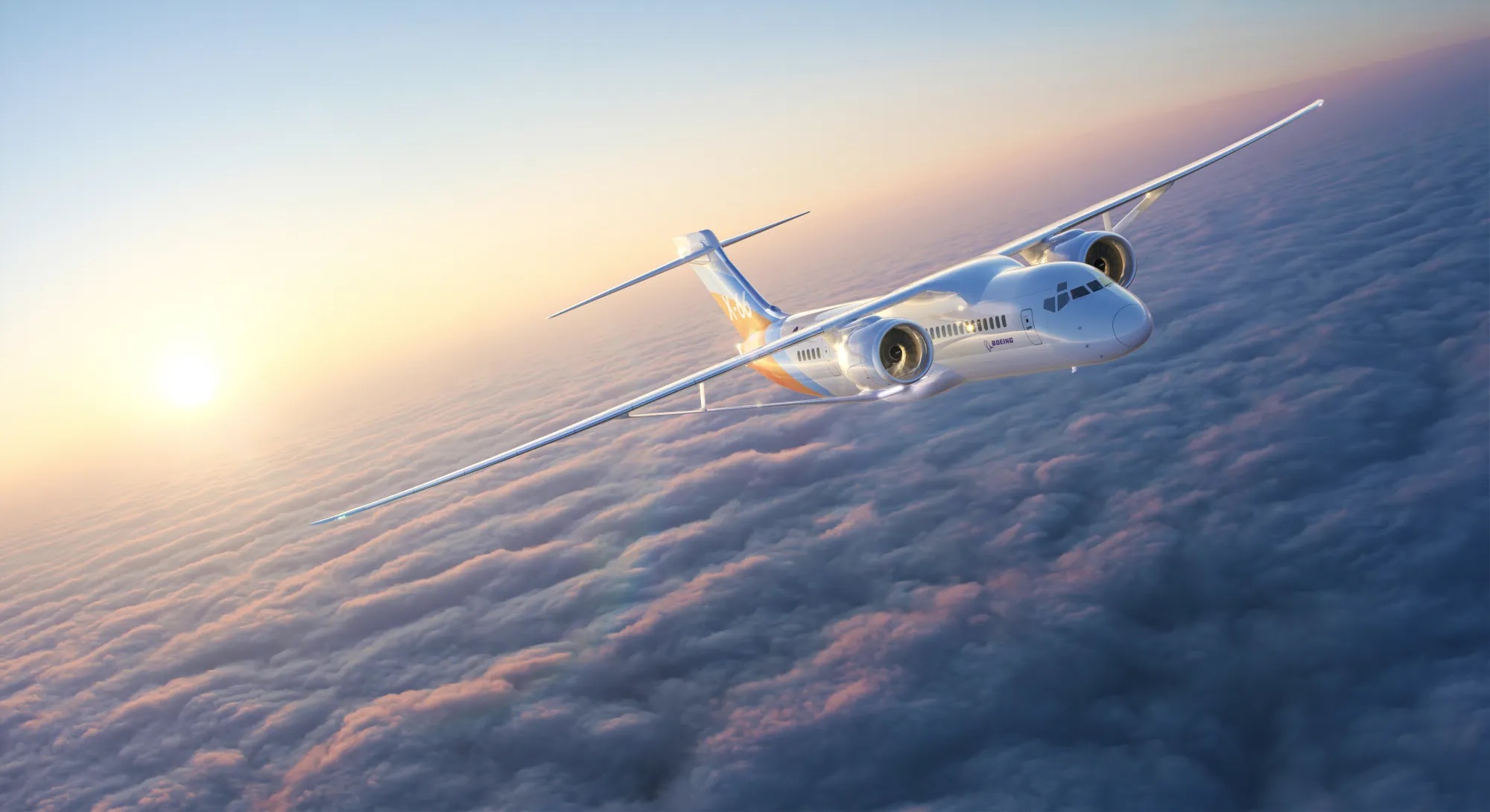Climate change is arguably the single greatest threat facing the world today. According to the Sixth Assessment Report (AR6) by the UN Intergovernmental Panel on Climate Change (IPCC), average global temperatures are set to increase between 1.5 and 2 °C (2.7 to 3.6 °F) by mid-century. To restrict global temperatures to an increase of 1.5 C and avoid the worst-case scenarios, the nations of the world need to achieve net zero emissions by then. Otherwise, things will get a lot worse before they get better, assuming they ever do.
This means transitioning to cleaner methods in terms of energy, transportation, and aviation. To meet our climate commitments, the aviation industry is developing technology to significantly reduce air travel’s carbon footprint. To help meet this goal, NASA and Boeing have come together to create the X-66 Sustainable Experimental Airliner, the first experimental plane specifically focused on helping the U.S. achieve net-zero aviation. Last week, NASA released a new rendering of the concept, giving the public an updated look at the future of air travel.
This configuration is identical to the one unveiled by NASA and Boeing at the Experimental Aviation Association‘s (EAA) AirVenture Oshkosh airshow last year. As you can see from the renderings (above and below), the design features the Transonic Truss-Braced Wing concept. Developed by Boeing, this design features extra-long, thin wings stabilized by diagonal struts. This configuration is based on “Subsonic Ultra-Green Aircraft Reach (SUGAR)” research, a series of studies that began in 2011 to evaluate the benefits of truss-bracing and hybrid electric technologies.

Combined with an advanced propulsion system, a sophisticated systems architecture, and advanced materials, this configuration could reduce fuel consumption and the resulting emissions by up to 30% (compared to top-of-the-line commercial aircraft). Development of the X-66 began in early 2019 through the Sustainable Flight Demonstrator (SFD) project, which is an integral part of NASA’s Sustainable Flight National Partnership (SFNP) – where NASA Aeronautics partners with industry, academia, and other agencies to accomplish the goal of net-zero aviation by 2050.
To build the X-66A, Boeing has been working with NASA to modify a McDonnell Douglas MD-90 single-aisle passenger aircraft. Modifications include a shortened fuselage and the replacement of its wings with the longer, thinner truss-braced variant. The engines have also been relocated from the tail section to under the wings and replaced with gas-electric models. Boeing transported the MD-90 aircraft to its facility in Palmdale, California, in August of 2023 and has since removed its engines and completed the 3-meter (10-foot) model wing they will use for aerodynamic testing.
The project’s ultimate goal is to inform a new generation of more sustainable, single-aisle aircraft, which account for the largest share of air travel worldwide. The program is also part of the U.S. Aviation Climate Action Plan, which seeks to not only meet the nation’s ambitious climate goals but also to improve the quality of life for those living near airports and under flight paths through reductions in noise and pollutants. As NASA Administrator Bill Nelson remarked in a press statement last year:
“At NASA, our eyes are not just focused on stars but also fixated on the sky. The Sustainable Flight Demonstrator builds on NASA’s world-leading efforts in aeronautics as well [as] climate. The X-66A will help shape the future of aviation, a new era where aircraft are greener, cleaner, and quieter, and create new possibilities for the flying public and American industry alike.”
Further Reading: NASA


Sustainability in all walks of life is critical to the future of all of us, of that there is no doubt, but Boeing being financially supported by the US tax payer to develop sustainable aircraft is not a good use of taxpayer money. Aircraft manufacturers and engine manufacturers should be funding this research and producing more efficient engines as a matter of industrial evolution. Commerically, these companies benefit, they do not repay the money the tax payer invests and this is not a sustainable use of tax payer money – no matter the nation or the organisation.
Also, climate change is not the biggest threat facing humanity – scientific ignorance is.